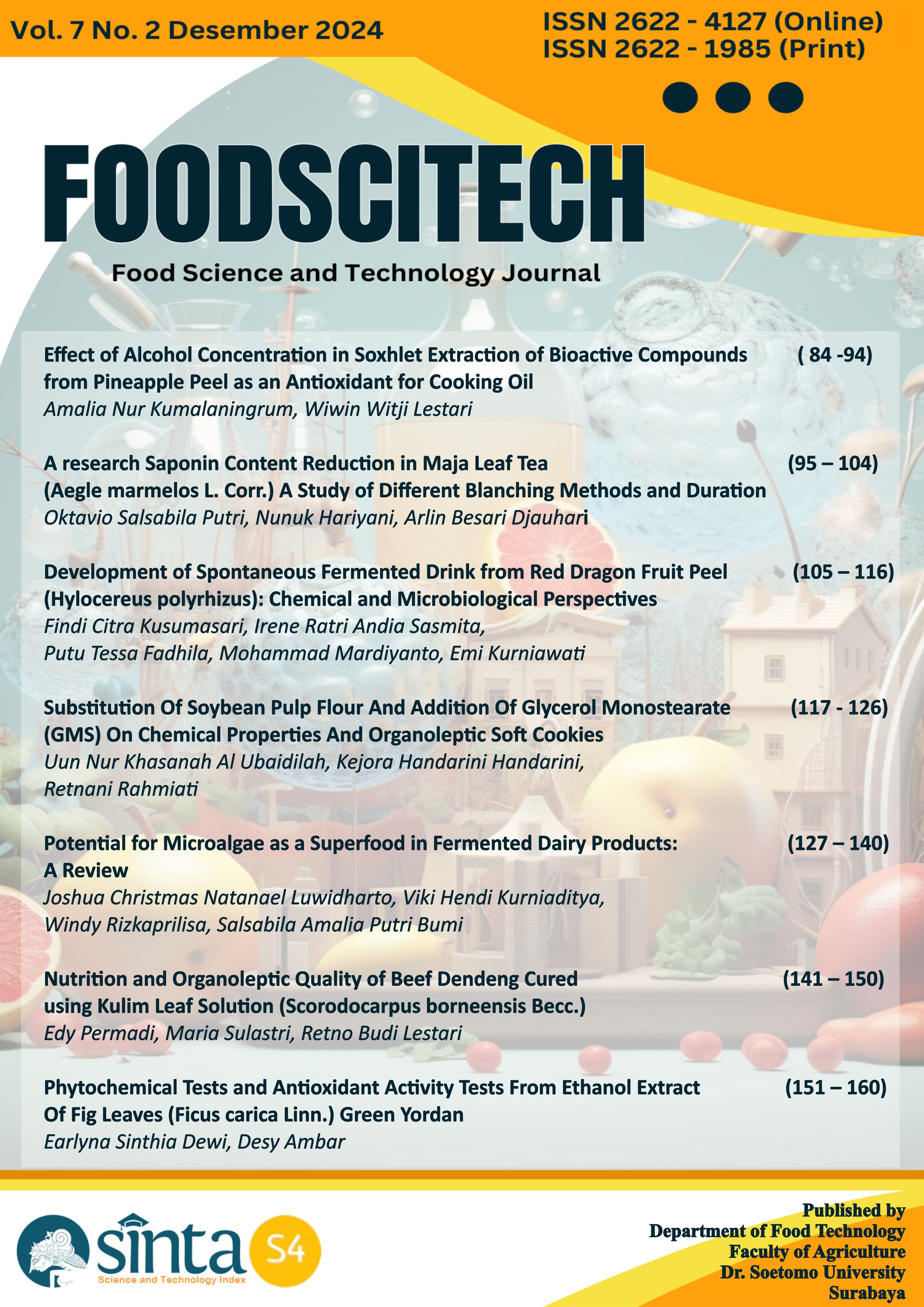Main Article Content
Abstract
The potential of maja plant leaves (Aegle marmelos L. Corr.) in Indonesia is important to research, because it can be a new alternative herbal tea. It is known that maja leaves contain saponin. Saponin levels can decrease with blanching treatments such as boiling and steaming. This research uses an experimental method, with a completely randomized design (CRD) consisting of two factors, the first factor (C) is the method of blanching maja leaf tea with two levels, namely C1: Boiling and C2: Steaming, and the second factor (L) is blanching time with three levels, namely L1: 5 minutes, L2: 7 minutes and L3: 9 minutes which is repeated three times. The research data were analyzed using ANOVA (Analysis of Variance) in SPSS version 23. If the results of analysis showed that there were significant differences between treatments (p<0.05), then a further test was carried out using the LSD and Tukey HSD test at the level confidence α=5%. Organoleptic test analysis was analyzed using the liking (hedonic) test, followed by the Kruskal Wallis test. The best determination of all research parameters is carried out using the Effectiveness Test. The consclucion of the experiment reseach, it shows that the interaction between different blanching methods and duration have a significant effect on saponin levels, a very significant effect on water content and the C2L2 treatment is the best treatment with the highest yield value is 0.82 with the research variables is saponin 15.14 mg/ml, water content 3.47%, average color 5.52, aroma 4.79 and taste 4.88
Keywords
Article Details

This work is licensed under a Creative Commons Attribution-NonCommercial-ShareAlike 4.0 International License.

This work is licensed under a Creative Commons Attribution-ShareAlike 4.0 International License.
References
- No additional
